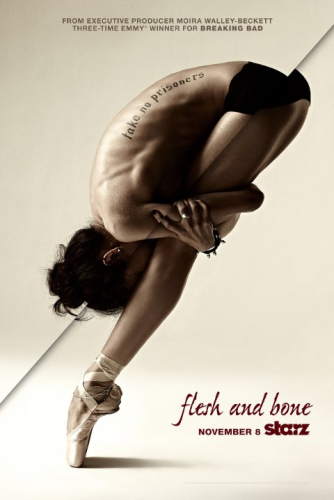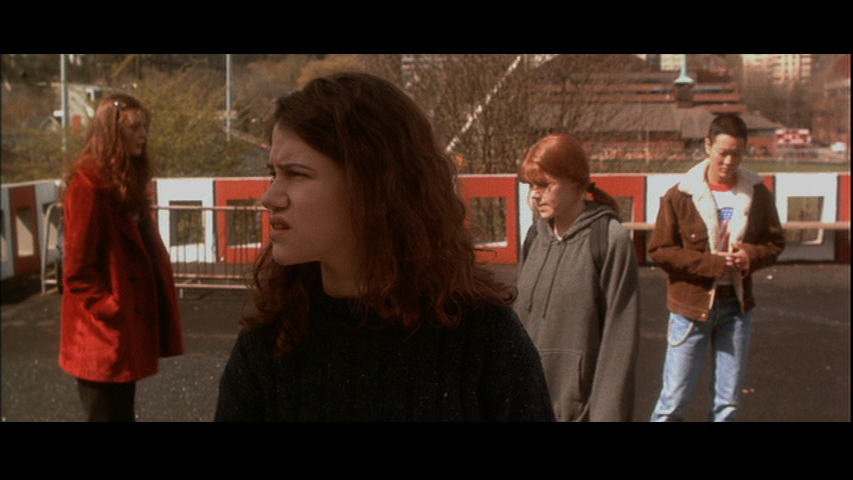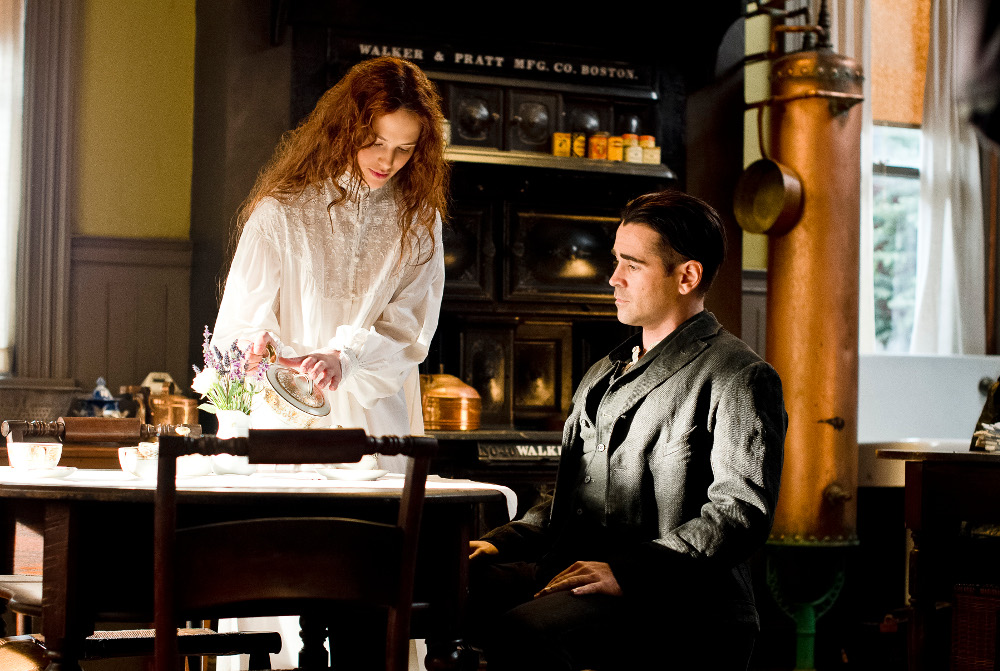This is a guest post by Giselle Defares.
The Nutcracker, Swan Lake, the experimental modern ballet in your local theater–audiences are enthralled with elegant women who can dance on two toes. The entertainment industry repeatedly tried to accurately capture the dance world with various results. From Showgirls (1995) to Center Stage (2000), to Black Swan (2010), most of the time it’s a shallow portrayal of the drama in the dance world. In the TV landscape there are the documentaries: Misty Copeland’s A Ballerina’s Tale and Sarah Jessica Parker narrated City.Ballet. Yet the scripted TV shows didn’t fare well. CW had a modest hit with the “reality show” Breaking Pointe, ABC Family tried it with Bunheads, and in the Netflix catalog there’s the Australian show Dance Academy. It’s hard to engage an audience outside the theater. However, the pay cable network Starz likes a challenge and created their ambitious project Flesh and Bone.
The executive-producer, former dancer and brains behind the show is Moira Walley-Beckett who previously wrote for AMC’s Breaking Bad. She recounted to USA Today that for the leading role she was determined to find a dancer who could act, instead of an actress who has to endure rigorous training to execute the complicated ballet routines. It seems like a callback to the dance classic The Red Shoes (1948), which starred the renowned ballerina Moira Shearer. Yet after auditioning over a hundred girls Walley-Beckett became disillusioned. The network and Walley-Beckett decided to cast a wider net, searched abroad and that’s when they found the fabulous Sarah Hay. According to an interview with WWD, Hay was raised in New Jersey by artist parents, and she commuted every day of the week to train – first with the New York City Ballet, and then with ABT itself. After graduating she struggled to fit in because of her “curvy” physique and decided to try her luck abroad and became a soloist at the Semperoper Ballet in Dresden, Germany.
Flesh and Bone was created with a multiple season arc in mind and there’s certainly a lot of material to explore. From competitive jealousy to body image issues and pushing your personal limits to get to the top to the realization that your dream is not what you’ve envisioned over all those years. It turned out that the show was quite a gamble for the network and incredibly expensive; think rehearsal time, space, choreographers and physical therapy for the dancers. It seems that other shows in the Starz line up, such as Ash v. Evil Dead, got the preferential treatment. It was only a couple of weeks before the show premiered that Starz announced that Flesh and Bone would be an eight-episode mini-series.
Flesh and Bone centers around the young and talented ballerina Claire Robbins (Sarah Hay) who escapes her tormented family life in Pittsburgh, when she hears the news that her soldier brother Bryan (Josh Helman) returns from Afghanistan, to try out for the fictional New York’s American Ballet Company, which she makes on her first attempt. Once she’s accepted in the corps of the Ballet Company, she struggles with Kiira (Irina Dvorovenko), a principal dancer who is almost at the end of her prime, her roommate Mia (Emily Tyra) who isn’t quite as talented as Claire and the larger-than-life artistic director Paul (Ben Daniels) who’s is still dealing with the loss of his own talent and sees in Clair his golden goose to a revitalized career.
Many have described the show as a “dark and gritty” ballet series. Of course there are the obligatory shots of the ruined feet and bloody toenails and the tedious exercises at the barre, but the framework is focused on personal drama. Comparisons are easily made with the aforementioned Center Stage and Black Swan. What they have common is that they’re focused on the art form ballet as the essence of drama. In all three stories, the audience sees the conflict, stress, and the cutthroat competition within a ballet school or company. Yet, compared to the other stories it almost seems that there’s no silver lining in Flesh and Bone.
Flesh and Bone doesn’t avoid the major clichés. Claire is the naïve girl who follows her dream and loses her innocence in the big city. There’s the tough, rich girl Daphne (Raychel Diane Weiner) who also dances as an exotic dancer and who has a questionable friendship with a Russian mobster (Raychel’s tattoo of “Take No Prisoners” inspired the art department). Paul has a Latino rent boy who gives him affection and keeps calling him “Papi.” Claire’s predatory brother has big bad wolf engraved on his forehead. There’s an arc with the overly polite homeless man Romeo (Damon Herriman) (he walked straight out of The Fisher King) who lives outside Claire’s building and develops a small obsession with her; there’s Charlie from Center Stage (Sascha Radetsky) as Ross, who plays a straight bad boy who wants to get in everyone’s tights. And so on.
Since the show is aired on a pay cable network, sex and nudity make an appearance. For some the nudity could be gratuitous in order to give the show a more edgy character. At first glance, it seems that Claire is exploring her sexuality in unconventional ways. In the pilot, the audience is introduced to Claire’s new roommate, Mia, as she rides a nameless guy on the couch, which she later instructs Claire to sleep on. Paul sees no problem in using his dancers as escorts to get what he wants (all for the sake of the company of course), and there’s the exotic dancer subplot. Dancers are relatively comfortable in their bodies so being nude isn’t a far stretch.
The sex isn’t just sex; it’s often revolved around power plays and personal liberation. It’s interesting to see Claire navigate sexuality, because she seems terrified of the men she encounters and looks envious at other women who unapologetically use their sexuality. The crux of the story is Claire’s damaged psyche and how she’s able to free herself from the horrible abuse she endured. It must be said that Hay is an intriguing actress yet sometimes Claire’s passivity throughout the series becomes rather frustrating to watch – especially in the incestuous scenes between Claire and Bryan. The writers tried to incorporate the atrocities of under aged Russian sex slaves into the mix but they didn’t flesh out the characters. So once again a minor storyline fell flat.
So why watch Flesh and Bone? The astute attention to detail in the ballet scenes, the charismatic and talented dancers, the customs, heck even the opening credits are amazing. Hay has a fantastic screen presence and gives it her all with what she has been given. Daniels certainly enjoys his role as Paul and was marvelous in the moments where he was able to show what the stress of such an high-profile job does to a person when the mask is off. Dvorovenko nailed her part as the coke-addicted prima ballerina and Tyra milked her screen time for all its worth as Claire’s bitchy roommate. Despite the cliché role, Herriman is really compelling as Romeo. It’s unfortunate that Starz decided to create a limited series, therefore the (melo)drama was weighed down with loads of clichés and many supporting characters fell flat.
Will Flesh and Bone dance itself en pointe into our cultural lexicon? That remains to be seen. However, a niche audience will always be enthralled with the illusion of beauty in ballet.
[youtube_sc url=”https://www.youtube.com/watch?v=C8wKm3grIxc”]
Giselle Defares comments on film, fashion (law), and American pop culture. See her blog here.



















